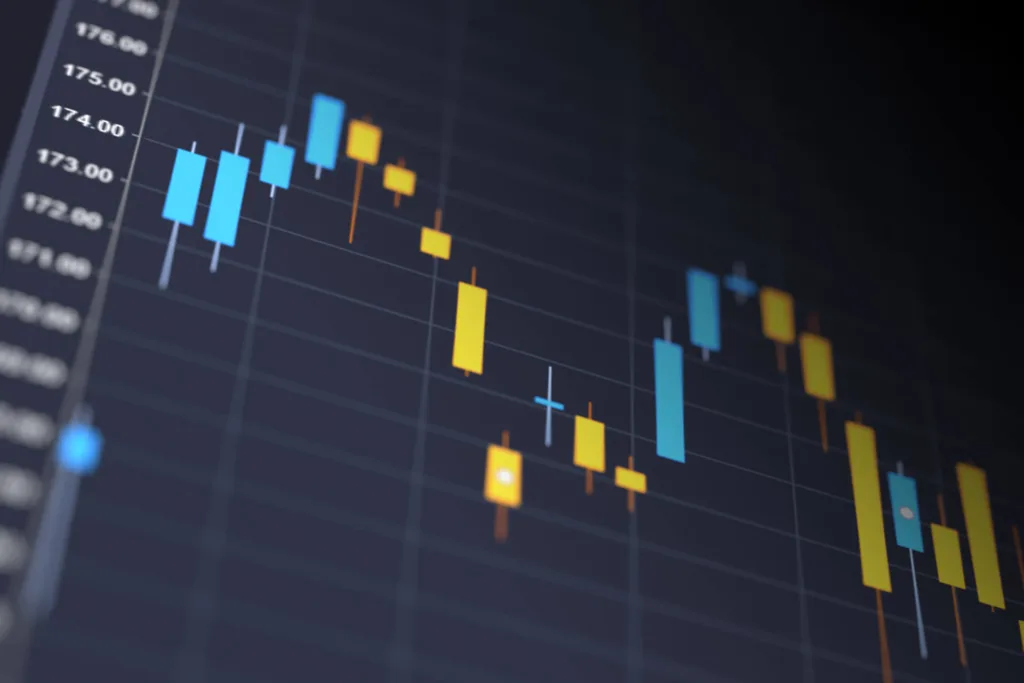The financial markets are inherently volatile, characterized by constant fluctuations in prices. To navigate these uncertainties, traders and investors rely on various tools and indicators to gauge market sentiment and make informed decisions. One such tool is the Volatility Index, commonly known as VIX.

To measure and track this volatility, the Cboe Volatility Index (VIX) was introduced. Also known as the “fear gauge,” the VIX provides a valuable insight into market sentiment and can be utilized in various ways to assist in investment decision-making. In this article, we will delve into the world of the VIX, exploring its types, calculation methods, interpretation, and practical applications for traders and investors.
1. What is the VIX? (Cboe Volatility Index)
The VIX, or Cboe Volatility Index, is a numerical representation of the expected volatility in the stock market over the next 30 days. The Volatility Index (VIX) is a widely recognized measure of market volatility and investor sentiment. It was introduced by the Chicago Board Options Exchange (CBOE) in 1993 and is often referred to as the “fear gauge” of the market because it tends to rise when market participants are more fearful or uncertain about future price movements. . It measures the degree of price fluctuation in the S&P 500 index options.
2. Importance of VIX in Investment Decisions
The VIX plays a crucial role in investment decisions by providing insights into market sentiment and the level of perceived risk. It helps investors assess potential market downturns, manage their risk exposure, and identify trading opportunities. By understanding the VIX, investors can make more informed decisions and adapt their strategies accordingly.
3. Understanding the VIX
Types of VIX
Cboe Volatility Index (VIX)
The Cboe Volatility Index (VIX) is the main and original index that measures the expected volatility of the S&P 500 index options over a 30-day period. It is widely used as a benchmark for market volatility and is considered the most reliable indicator of investor sentiment. It reflects the market’s anticipation of future volatility in the overall stock market.
VIX Short-Term Volatility Index (VIX9D)
The VIX9D is a short-term volatility index that measures the expected volatility over the next nine days. It provides a more immediate snapshot of market sentiment and can be useful for short-term traders or those looking for quick insights into market expectations.
VIX Mid-Term Volatility Index (VIX3M)
The VIX3M is a mid-term volatility index that measures the expected volatility over the next three months. It offers a broader perspective on market sentiment and can be beneficial for medium-term investors or those interested in longer-term trends.
VXN Volatility Index
The VXN Volatility Index focuses on the expected volatility of the NASDAQ-100 Index options. This index provides insights into the market sentiment specifically related to the technology-heavy NASDAQ stocks.
VXD Volatility Index
The VXD Volatility Index tracks the expected volatility of the Dow Jones Industrial Average (DJIA) options. It offers an understanding of volatility expectations within the blue-chip stocks represented in the DJIA.
RVX Volatility Index
The RVX Volatility Index measures the expected volatility of options on the Russell 2000 Index. It provides insights into the market sentiment surrounding small-cap stocks.
Sector-Specific VIX Indices
In addition to the main VIX index, there are also sector-specific VIX indices that measure volatility within specific sectors of the market. These indices provide insights into sector-specific risk and can be valuable for investors focused on particular industries or sectors.
Calculating the VIX
The VIX, or Cboe Volatility Index, is the financial world’s equivalent of a weather vane for market sentiment. Its ever-shifting value reflects investor anxiety about the near-term S&P 500, making it a crucial tool for anyone navigating the stock market. But how exactly is this enigmatic number calculated? Buckle up, intrepid investor, because we’re about to crack the VIX code.
The Complexities of VIX Calculation
Calculating the VIX is no walk in the park. It’s a multi-step process involving complex options pricing models and a hefty dose of mathematical magic. Here’s a simplified breakdown:
Gathering Data:
The VIX draws its lifeblood from the prices of S&P 500 call and put options expiring within the next 30 days. Think of these options as insurance contracts for investors, with their prices reflecting their perceived level of market volatility.
Implied Volatility:
For each option, its price is used to calculate its “implied volatility.” This essentially translates the price into a percentage that represents the market’s expectation of how much the S&P 500 will fluctuate before the option expires.
Weighing the Options:
Not all options are created equal! The VIX prioritizes options closer to expiration and adjusts their impact based on their open interest (the number of outstanding contracts). This ensures the index focuses on the most relevant near-term sentiment.
Squaring and Averaging:
To smooth out the data and account for different strike prices (exercise prices of the options), the VIX takes the squared implied volatilities of each option and computes their weighted average.
The Magic Formula:
Finally, the VIX applies a mathematical formula to the averaged squared volatilities, translating them into a single, standardized percentage. This percentage is what we see reported as the VIX, representing the annualized expected volatility of the S&P 500 over the next 30 days.
Importance of Implied Volatility and Option Pricing
Implied volatility is a crucial component in calculating the VIX. It represents the market’s expectation of future price fluctuations and is derived from option prices. High implied volatility suggests greater uncertainty and potential for larger price swings, while low implied volatility indicates relative stability.
Option pricing models, such as the Black-Scholes model, rely on implied volatility to determine the fair value of options. By analyzing implied volatility levels, investors can gain insights into market expectations and potential price movements, which can be valuable in making informed investment decisions.
Interpreting the VIX
High VIX vs. Low VIX: Implications for the Market
A high VIX indicates that investors are anticipating increased market volatility and are likely more fearful or uncertain about future price movements. This could imply that investors expect a decline in stock prices or heightened levels of market turbulence.
Conversely, a low VIX suggests that investors anticipate lower levels of volatility and are generally more confident about future price movements. This could indicate a period of relative calm or stability in the market.
VIX as a Leading Indicator of Future Volatility
The VIX is often viewed as a leading indicator because it tends to rise ahead of periods of increased market volatility. As such, it can provide valuable insights into potential turning points or shifts in market sentiment. Investors can use the VIX to anticipate changes in volatility and adjust their strategies accordingly.
Limitations of VIX Interpretation
While the VIX provides valuable information about market sentiment, it has some limitations that investors should be aware of. Firstly, it reflects investor expectations rather than guaranteed outcomes. Market conditions can change rapidly, rendering previous expectations obsolete.
Secondly, the VIX has a short-term focus and may not capture long-term trends accurately. It is essential to consider other fundamental and technical indicators when making investment decisions to gain a comprehensive view of market conditions.
4. Using the VIX
Risk Management
Hedging Portfolios with VIX Derivatives (Options and Futures)
One practical application of the VIX is portfolio hedging. Investors can use VIX options or futures contracts to offset potential losses during periods of increased market volatility. By purchasing these derivatives, investors can protect their portfolios against adverse price movements.
Adjusting Risk Exposure Based on Expected Volatility
Investors can also adjust their risk exposure based on their assessment of future volatility using the VIX. During periods of high expected volatility, reducing positions or increasing cash holdings can help mitigate potential losses. Conversely, during periods of low expected volatility, investors might choose to increase their exposure to capitalize on potential gains.
Trading Strategies
Volatility Spreads: Capitalizing on VIX vs. Actual Price Movements
Volatility spreads involve taking positions based on expected changes in the VIX compared to actual price movements. By analyzing historical relationships between the VIX and underlying asset prices, traders can identify opportunities to profit from discrepancies between expected and realized volatility.
Short-Selling VIX: Profiting from Potential Decrease in Market Anxiety
Another strategy involves short-selling the VIX itself. Traders who anticipate a decrease in market anxiety can sell VIX futures or options contracts with the expectation that their value will decline as volatility subsides. This strategy is not without risks, as unexpected increases in volatility can lead to significant losses.
Utilizing VIX Futures: Speculating on Future Volatility Levels
VIX futures allow traders to speculate on future levels of volatility. By taking positions in these futures contracts, traders can profit from accurately predicting changes in expected volatility over specific timeframes. However, trading futures requires careful consideration of risk management principles due to their leveraged nature.
Market Analysis
Gauging Investor Sentiment and Market Psychology
The VIX provides valuable insights into investor sentiment and market psychology. By monitoring changes in the VIX levels, investors can gain an understanding of how fear or complacency is influencing market participants’ behavior. This information can help identify potential turning points or shifts in market trends.
Identifying Potential Turning Points and Trend Changes
Changes in the VIX can help identify potential turning points or trend changes in the broader market. When the VIX reaches extreme levels, it may signal an oversold or overbought condition, indicating an impending reversal in market direction. Combining this analysis with other technical indicators can enhance accuracy.
Combining VIX Analysis with Other Technical Indicators
The VIX should not be used as a standalone indicator but instead should be combined with other technical indicators to gain a comprehensive understanding of market conditions. Oscillators, moving averages, and trendlines can provide additional insights into price movements and confirm or contradict signals derived from the VIX.
5. Benefits and Limitations
Benefits
Enhanced Risk Management
The VIX provides valuable information for risk management purposes. By monitoring changes in implied volatility levels, investors can adjust their portfolios accordingly to protect against potential losses during volatile periods.
Profiting from Volatility Fluctuations
For traders who specialize in volatility-based strategies, the VIX offers opportunities to profit from fluctuations in implied volatility levels. By accurately predicting changes in future volatility, traders can take advantage of options pricing discrepancies or capitalize on trends in related markets.
Valuable Market Insights
The VIX offers insights into investor sentiment and market expectations. By understanding how fear or complacency influences market participants’ behavior, investors can gain a deeper understanding of current market conditions and make more informed investment decisions.
Diversification Tool for Investment Strategies
Including exposure to volatility through instruments tied to the VIX can provide diversification benefits for investment portfolios. As volatility tends to move independently of traditional asset classes, adding this component can reduce overall portfolio risk.
Limitations
Short-Term Focus, Missing Long-Term Trends
The VIX has a short-term focus as it measures expected volatility over a 30-day period. It may not capture long-term trends accurately or provide insights into extended periods of market stability or instability. You may find VIX missing in the arsenal of long term investors , they may resort to financial ratios , Financial Statement analysis etc but VIX has little use when researching the companies except for providing entry point prices.
Reflects Market Sentiment, Not Guaranteed Accuracy
While valuable for assessing market sentiment, it is important to note that the VIX reflects investor expectations rather than guaranteed outcomes. Market conditions can change rapidly, rendering previous expectations obsolete.
Requires Knowledge and Experience for Effective Use
To effectively utilize the VIX, investors need knowledge and experience in interpreting its signals and integrating them into their investment strategies. It is crucial to understand its limitations and supplement its analysis with other indicators for comprehensive decision-making.
Limited Use Cases for Beginner Investors
For beginner investors who are still developing their foundational knowledge and skills, utilizing the VIX may not be suitable due to its complexity and advanced nature. Beginner investors should focus on understanding basic investment principles before incorporating more sophisticated tools like the VIX.
6. Real-World Examples
Historical Cases of VIX Influencing Market Events
Throughout history, there have been several instances where significant changes in the VIX preceded major market events. For example:
• The spike in the VIX before Black Monday in 1987 signaled increased anxiety among investors, foreshadowing one of the largest single-day stock market crashes.
• The surge in the VIX during the financial crisis of 2008 reflected heightened concerns about systemic risk and contributed to increased market turbulence.
Examples of Successful VIX-Based Trading Strategies
Traders have developed various successful strategies based on analyzing the VIX’s relationship with underlying assets or options pricing discrepancies:
• The dispersion trading strategy involves taking positions based on expected convergence or divergence between individual stock volatilities and overall market volatility.
• The roll yield strategy aims to profit from contango or backwardation in VIX futures contracts by rolling positions at advantageous times during contract expiration cycles.
Case Studies of How Investors Utilized VIX for Risk Management
Numerous institutional investors have successfully utilized VIX-based strategies for risk management purposes:
• During periods of increased expected volatility, pension funds may increase their allocation to fixed-income investments to reduce overall portfolio risk.
• Hedge funds may incorporate dynamic hedging strategies using options on equity indices tied to the VIX to protect against downside risk during turbulent markets.
Conclusion
In conclusion, understanding and utilizing the VIX can significantly enhance investment decision-making by providing valuable insights into market sentiment and expectations regarding future price movements. By incorporating strategies based on this “fear gauge,” investors can better manage risk exposure, identify trading opportunities, and gain deeper insights into overall market conditions. However, it is crucial to acknowledge its limitations and supplement its analysis with other indicators for comprehensive decision-making. Continued research and exploration of various applications will further empower investors to leverage this powerful tool effectively.
Frequently Asked Questions (FAQ):
Q1. Is a high VIX good or bad?
A2. High VIX signifies increased expected volatility, which can be good for volatility traders but poses potential risks for other investors.
Q2. What causes the VIX to rise?
A2. Major economic events, geopolitical tensions, and negative market news can all contribute to an increase in the VIX.
Q3. Is the VIX always accurate?
A3. The VIX reflects implied volatility based on option pricing, not guaranteeing actual market movements.
Q4. Can I invest directly in the VIX?
A4. You cannot directly invest in the VIX; however, you can trade VIX-based derivatives like options and futures.
Q6. Can retail traders access the VIX directly?
A6. Yes, retail traders can access the VIX indirectly through various exchange-traded products (ETPs) such as ETFs or by trading VIX futures and options contracts.
Q7. Can the VIX be used as a standalone indicator for trading decisions?
A7. While the VIX provides valuable insights into market sentiment, it is advisable to combine it with other technical and fundamental analysis tools to make well-rounded trading decisions.
Q8. Are there any alternative volatility indicators apart from the VIX?
A8. Yes, apart from the VIX, there are other volatility indicators like the VXO (Old VIX), EVZ (EuroStoxx Volatility Index), and GVZ (Gold Volatility Index), among others.
Q9. Are there any risks associated with trading VIX-related products?
A9. Yes, trading VIX-related products involves risks such as market volatility, liquidity risk, and tracking error risk when dealing with ETPs.
Q10. Is it possible to predict future market movements solely based on VIX readings?
A10. While high levels of VIX indicate increased market uncertainty, it does not guarantee accurate predictions of future price movements. Traders should use the VIX in combination with other technical and fundamental analysis tools for more reliable forecasts.
Q11. Can I calculate the VIX myself?
A11. Technically, yes. But you’d need access to detailed options data and specialized software to perform the complex calculations. Most investors rely on readily available VIX values from financial websites or trading platforms.
Q12. Is the VIX calculation the same for other VIX indices?
A12. The core methodology is similar, but specific weighing and adjustment factors might differ for VIX variations like sector VIX indices or VIX futures.
Q13. Does the VIX calculation ever change?
A13. The VIX methodology has been revised a few times throughout its history to adapt to market changes and improve accuracy.
Reference : http://www.investopedia.com







